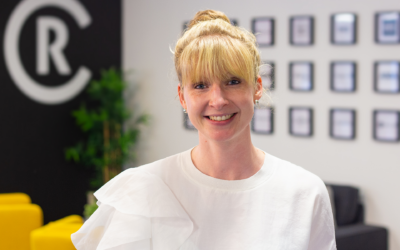As an industry, agencies often urge client-side marketers to be brave and take creative risks in order to achieve success for their brands. This type of language could be self-defeating.
We need to use our collective knowledge of people and the evidence around effectiveness to make original and distinctive creative feel like the safe option, says Ed Steele, Senior Strategist at CreativeRace.
Humans operate by rules of thumb. Generalisations and mental short cuts that, generally, help us to get through life more or less unscathed, without having to actively weigh up the pros and cons of every situation. The technical term for this is heuristics.
Usually following a heuristic is a decent strategy, but not always.
For example, it’s generally a good idea to base a decision on past experiences where the outcome has been good. Like sticking to the same driving route to and from work because you don’t usually get stuck in traffic and arrive when you expect to. But past experience is not a guarantee of future outcome. One day you’ll be following your usual ‘safe route’ to work, and you’ll get stuck due to an accident up ahead and be late for your important 9am meeting.
It’s also often a good idea to follow what other people do. Restaurants that are popular are the ones that don’t give people food poisoning. But following the herd also leads people to stand in a queue for no reason or invest in a market just before it crashes.
Following the herd and social conformity is one of, if not the, most powerful drivers of human behaviour. 99% of us don’t like being the awkward one or standing out, and we’re terrified people will laugh at us or think we’re weird.
That’s why it’s easy to understand why we end up seeing marketing creative that…well…just isn’t very creative. Whether it’s packaging design or a TV ad there is so much work produced that looks like the competition, says the same thing, or follows the same trend as everyone else. It feels like the safe option to adopt a similar creative strategy as others, because if everyone else is doing it then it must work, right?
Safety away from the herd
Of course, in the case of marketing creative, doing the same as everyone else isn’t a good idea. Effectiveness evidence shows that highly creative and distinctive communication is the key to success. So, to counter this tendency for marketers to gravitate to the comfort of falling in line with the pack, agencies and marketing influencers often urge client-side colleagues to be brave and have the courage to buy creative work that stands out and pushes boundaries.
I think there is an inherent problem here. Asking marketers and businesses to be brave or courageous makes using original and distinctive creative seem like a risk. And of course, people are mainly risk averse, especially at work. They like to make decisions and recommendations to their boss that seem like sensible options and that should result in a positive outcome.
Even if the course of action a person recommends to their employer or stakeholders doesn’t work out, so long as there is a logical reason for taking that option, then their reputation (or job) won’t be at risk. This is better than taking the risk of choosing something without a logical rationale and that then fails. To quote Rory Sutherland “no one ever got fired for buying IBM”.
So, by calling for more courage and boldness in marketing communication we are asking marketers to go against one of the most powerful instincts that drive human behaviour. It’s really pushing water uphill. It doesn’t need to be this way though.
Know your audience
If you really understand people, and the type of marketing communication that they respond to, then you will know that using a highly creative and distinctive approach isn’t a risk. Creativity is just sensible business practice.
Highly creative marketing activity is essential to business success due to three fundamental truths about people.
First, we notice what is different. Our brains are hard wired to look out for anything that stands out of the usual pattern, mainly in case it’s food or a threat. As soon as the sights, sound or smells around us fall into a predictable pattern we stop consciously paying attention to save our brains some work.
Secondly, we seek out entertainment, or chances to be emotionally moved. I’m not going to start talking about ‘the human need for stories’, but you only need to look at how much time we spend watching, reading, and listening to content that provides an escape from the humdrum realities of life, to realise that it’s really important to us.
Finally, we remember the emotions that are linked to an event, rather than the facts as they really were. Being emotionally aroused, whether feeling happy, sad, angry or anything in between leads to memories for an event being strongly encoded in our brains. Events that we feel neutral about are the ones we forget.
This means that if you create marketing communication that is different to what you audience usually experiences, entertaining or moving and provokes an emotional reaction then it, and by extension your brand and message, is much more likely to be remembered than if it looks and sounds the same as everything else.
Doing something that makes your brand and message more memorable doesn’t sound like it requires bravery to me, it sounds like a wise investment. In marketing, by always striving to create communication that is highly creative and distinctive you are avoiding risk. This is how we need to frame creativity, it’s the level-headed choice.
Be guided by the evidence
As an industry we have plenty of evidence to be able to make this argument.
In The Long and Short of It, Binet and Field showed that almost twice as many emotionally driven marketing campaigns report very large profit growth, vs campaigns driven by rational messages.
The duo also showed, in The Link Between Creativity and Effectiveness, that campaigns that win creative awards are 11 times more efficient at driving market share growth as non-awarded campaigns.
We also know from work by System 1, that using highly distinctive, and often entertaining, brand characters (Fluent Devices), significantly increases performance in gaining marketing share and growing profit.
Ultimately, we know from work by Data2Decisions that the quality of creative is the single biggest driver of profit from advertising that marketers have control over. It’s only beaten by the size of the brand itself and its share of market.
I could go on.
Because of how well we now understand people, what makes them tick, and consequently the type of marketing communication they respond to, we can change the narrative around creativity in the industry.
The evidence shows that highly creative and distinctive communication makes businesses more profit. Creativity isn’t courageous, it’s the safe option.











